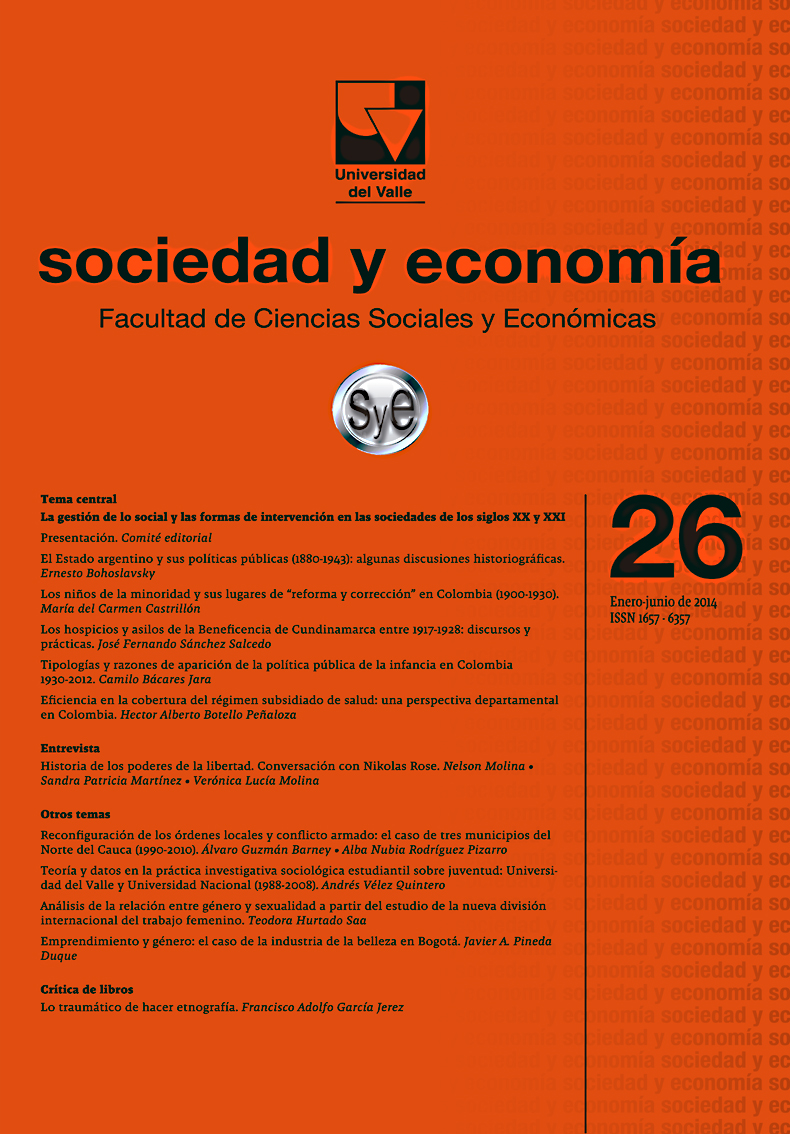Types and Reasons of Appearance of Public Policy for Children in Colombia 1930-2012
Main Article Content
This article describes and analyzes public policy for children and adolescents in Colombiafrom the emergence of the Protectionist State (1930) until the arrival of NeoliberalState (1984 -present). Through a historical review, it discusses how the last two prevailingmodels of development have influenced and defined these policies. Indeed, on accountof its establishment, children care property models ceased to be the exclusive propertyof the Church and became specialized labor and state entities. During the stage governedby import substitution, children and adolescents were subject to a number of initiativesof social compensation and protection. Once neoliberalism appears, many of the establishedpublic policies suffered an over-specialization and a slight growth due to legalcounterweight contained in applying the obligations to the global governance and theConvention on Child Rights.
- Politics and Social Welfare
- Public Policy
- Child Rights
- Development Models
Bácares Jara, C. (2014). Types and Reasons of Appearance of Public Policy for Children in Colombia 1930-2012. Sociedad Y Economía, (26), 95–119. https://doi.org/10.25100/sye.v0i26.3953
Downloads
Download data is not yet available.

This work is licensed under a Creative Commons Attribution-NonCommercial 4.0 International License.
Revista sociedad y economía editada por la Facultad de Ciencias Sociales y Económicas de la Universidad del Valle se encuentra bajo una Licencia Internacional Creative Commons Atribución - No comercial 4.0
Basada en una obra en http://sociedadyeconomia.univalle.edu.co





